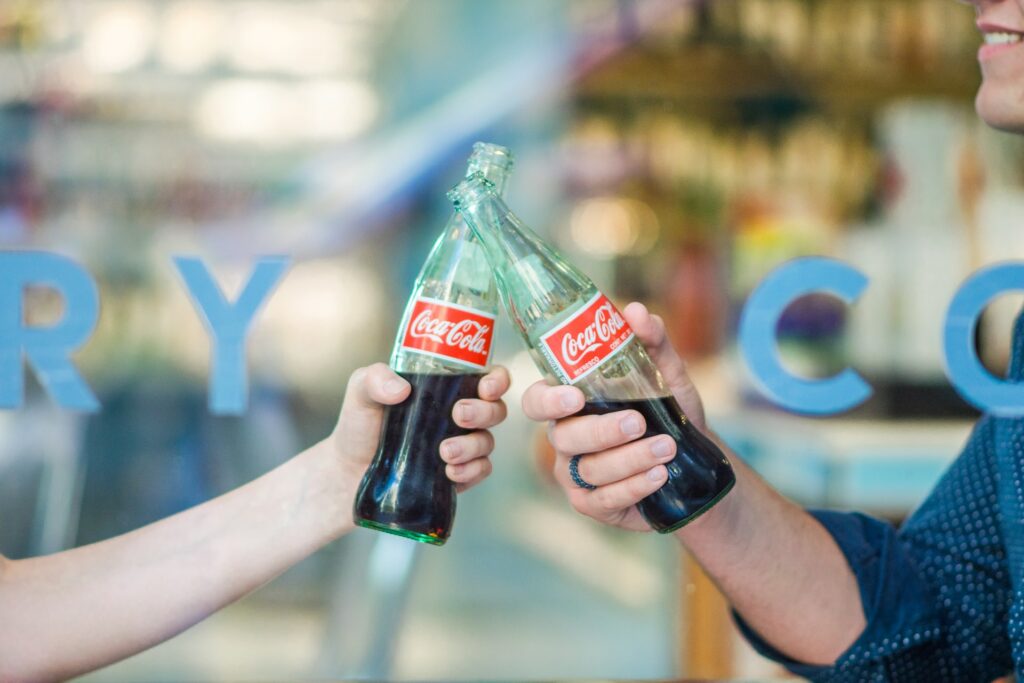Achieving consistent brand growth worldwide requires finding the right formula for scalability. One strategy that many companies use is global marketing standardization, which aims to create uniformity across products, operations and marketing worldwide.
However, this approach isn’t without its limitations and often needs to be combined with smart localization to ensure the offering is adapted and relevant for each target market.
Below, we’ll cover what global marketing standardization and localization entail, the advantages and disadvantages of standardization and provide key examples from top brands.
Free guide: Adapt your content strategy to local markets
What is global marketing standardization?

Its name says it all. Global marketing standardization focuses on creating a standardized plan of action across the board for marketing your brand or product in various countries.
The ultimate goal is to achieve consistency and create a global appeal to a brand and its standardized products. Think standardized packaging, a recognizable image and slight variation in strategy across international markets. A lack of standardization can easily create confusion and misalignment among both your customers and global teams.
Note that while the objective of global marketing standardization is to achieve uniformity across markets, adapting your strategy to a country’s cultural and social norms when necessary is crucial to the success of a standardization approach.
In an interview on our podcast about launching successful global marketing campaigns, Portugal-based marketing and communications director Mário Costa explained:
“Having a global strategy when you work in so many different markets is key. Without some high-quality standardization, you lose the identity, experience and sense of belonging to your brand—both among employees and customers.”
See also: International audience research methods: How to reach new markets effectively
What is localization in global marketing?

Localization in global marketing focuses on creating localized content in each region. It’s the process of adapting all elements of your international marketing to your target markets—from using different languages to adapting your messaging, visuals and campaigns. This helps ensure that your marketing reflects the interests, needs and context of your target audience in each region.
While you might use a marketing translation agency, localization is about understanding each market in terms of cultural values, economy, social trends, legislation and social nuances. The localization process involves a deep commitment towards creating a marketing strategy that specifically speaks to each target audience.
Ideally, you’d want to localize all of your global content marketing efforts—including your website, social media, global communication campaigns and other marketing materials.
So, when considering global marketing standardization vs. localization, the main difference would be whether or not you adapt any part of your marketing strategy when entering a new region.
See also: How to localize your content for more effective marketing in Europe
Do you work in global marketing? Sign up for our monthly newsletter for real work-related tales from our international team and insights on localization, global content marketing and everything in-between.
Advantages and disadvantages of standardization in international marketing
There are many upsides to implementing a standardized global marketing strategy and achieving consistency in your brand’s image and products.
Standardization can help keep costs low, as you don’t have to invest in a new product or design for every market you want to enter. Plus, the approach is a great way to create an internationally recognizable brand image, which is crucial when expanding into global markets.
However, you should also be aware of the caveats of a standardization approach. First off, this type of strategy may face challenges in markets with significantly different cultural values and norms. For example, if you first launch your brand in a European market, you’ll likely have to make some important adjustments when entering an Asian market.
In a podcast interview with Gastón Tourn, he spoke about his experience with this while working with dating app Badoo and how they adjusted their marketing in the different regions:
“People behave so differently when it comes to dating and relationships in different countries. For example, in New Zealand, women are much more in power in terms of taking the first step in conversations. Other countries, like the Nordics, have a much higher proportion of people who consider themselves non-binary.”
This is why the app couldn’t use a standardized approach to marketing in different countries; they had to localize their content and take into account the cultural nuances of their specific audiences.
It’s important to consider both the pros and cons of standardization. Each local market has its own unique needs and preferences, and applying an overarching standardization strategy without considering any local adaptations can result in adverse outcomes. So, even if you go the standardization route, integrating at least some form of localization into your marketing will help you.
Check out our case study with IE University, where one of our many projects with the brand involved brochure standardization.
3 companies that use a combination of standardization and localization

Many successful brands use standardized global marketing strategies, paired with localization in key markets. Let’s take a look at some great examples.
See also: 6 global marketing strategies to inspire you
Global standardized strategy #1: Coca-Cola
We’ll start with one of the most recognizable brands globally: Coca-Cola. You can find their beverages in over 200 countries, and regardless of whether you’re in Mexico City, Berlin or Mumbai, you’re sure to find their timeless red and white label. Coca-Cola is also all about product standardization—the timeless beverage tastes and looks the same across the world.
One of Coca-Cola’s strategy pillars is its uniform image, but it also implements numerous other global marketing efforts. Their global brand philosophy and platform, “Real Magic,” aims to unite people, emphasizing common ideals like unity and a shared sense of humanity. They launched their first global campaign under the “Real Magic” brand philosophy with the short film, “One Coke Away From Each Other” in September 2021. In 2023, they released “Masterpiece” to show what “happens when the whole universe comes together in Real Magic ways….”
The big takeaway from Coca-Cola’s new “Real Magic” strategy is its many virtual components, like social media and gaming initiatives, allowing them to reach international audiences with ease.
Coca-Cola is also an excellent glocalization example. While maintaining a standardized branding approach, they adapt their marketing and product line to specific markets where necessary.
While they maintain a global social media presence across Instagram, Facebook, X, TikTok and LinkedIn, they also have localized accounts in key regions. For example, they have several localized Instagram accounts that feature unique content created specifically for each region.
See below examples of localized posts on the Coca-Cola Peru Instagram page (left) and the Coca-Cola France Instagram page (right).


See also: Building a profitable glocalization strategy for your brand
Global standardized strategy #2: adidas
You’ll find the iconic adidas three-stripe logo in over 150 countries. Their standardized marketing efforts focus on universal values like “brand credibility, consumer experience and sustainability.”
You can find these types of efforts in their global “Own the Game” campaign, focusing this strategy in their Asian, EMEA (Europe, Middle East, and Africa), and US markets. Their approach centers on consumers and their preferred sports, namely football.
Adidas also run several localized websites and social media profiles, where they create region and language-specific content. Adidas created a shoe, especially for the Dubai Marathon. AdiZero Boston 12 Dubai Marathon was available in stores in Dubai as well as on their localized website. It was also promoted on their localized Dubai social media profiles.
Global standardized strategy #3: Red Bull
Finally, let’s look at Red Bull, the energy drink brand that’s dominated the industry for over three decades. A large part of the brand’s success is thanks to its strategic standardization efforts and widely recognizable image.
You’ll find the same Red Bull cans in almost every one of the 170+ countries that the drink is sold in. But the drink started off quite differently to what you now buy in the store. The original Red Bull is a local Thailand drink called Krating Daeng, a non-carbonated tonic that tastes like traditional medicine—but cured jetlag.
Austrian Red Bull founder, Dietrich Mateschitz, adapted the drink and its image to international tastes, adding carbonation and designing the emblematic blue and silver can. Thailand is the only market that has different packaging featuring yellow and red coloring. Apart from that, Red Bull maintains one strategy for all markets.


One of the reasons that Red Bull is so successful is that it doesn’t sell its product: it sells its brands. In every one of its markets, it targets adventure lovers and adrenaline seekers, hosting international events and coming out with exciting digital content.
The brand runs multiple localized social media profiles where it promotes its regional partnerships and events. See below an example of the brand promoting the Red Bull Street Style Global Championship in Brussels on its localized Belgium Instagram page.
Why you need a combination of standardization and localization in your global marketing strategy

If global standardization is all about finding common ground and ensuring brand consistency, localization centers on tailoring marketing strategies to the nuances of local markets. Both are global approaches that can benefit your company, and in many cases, the best option is usually a combination of the two.
If you implement a marketing and product localization strategy, you will want to pay close attention to the cultural differences that set each target market apart and adapt your image and product to fit those variances. Companies who take this approach generally have the necessary funds to manage the expansion and see massive growth potential in key target markets.
Companies taking the purely standardized approach often tend to be startups looking for scalable growth in new markets, first focusing on using existing marketing campaigns to test the waters. This then paves the way to slowly build on localized content their key regions.
VeraContent is a multilingual content agency that helps brands develop and carry out effective global marketing standardization and localization strategies. Learn more about VeraContent and reach out to us to find out if you qualify for a free content consultation.
If you’re looking to launch into new countries, download our worksheet for a guide on how to adapt your content strategy to local markets:


